 |
 |
 |
| |
Efficacy and safety of TMC278 in treatment-naïve, HIV-infected
patients: Week 96 data from TMC278-C204
|
| |
| |
Reported by Jules Levin
9th International Congress on Drug Therapy in HIV Infection, Glasgow, UK, 9-13 November 2008
J-M Molina,1 C Cordes,2 P Ive,3 A Vibhagool,4 LT Rimsky,5 S Vanveggel,5 P Williams,5 K Boven6
1Department of Infectious Diseases, Saint-Louis Hospital and University of Paris, Paris, France; 2Epimed GmbH, Berlin, Germany;
3Clinical HIV Research Unit, University of Witwatersrand, Johannesburg, South Africa; 4Bumrungrad Hospital Clinical Research Center, Bangkok,
Thailand; 5Tibotec BVBA, Mechelen, Belgium; 6Tibotec Inc., Yardley, PA, USA
Author Conclusions
All doses of once-daily oral TMC278 demonstrated a high and sustained virological response rate over 96 weeks.
TMC278 was generally safe and well tolerated
-- incidences of any grade 2-4 AE possibly related to treatment, rash, neurological- and psychiatric-related AEs and increases in lipids were lower with TMC278 than with EFV.
Efficacy and safety of TMC278 were well maintained between 48 and 96 weeks.
No definitive TMC278 resistance profile could be determined from the limited number of virological failures.
TMC278 is being further evaluated in Phase III trials at a dose of 25mg qd.
ABSTRACT
NNRTIs are very effective antiretrovirals (ARVs), but new NNRTIs with improved tolerability are needed. A randomised, Phase IIb study assessed the investigational next-generation NNRTI, TMC278, 25mg, 75mg and 150mg qd blinded up to 96 weeks, and an open-label control, efavirenz (EFV) 600mg qd in 368 treatment-naïve patients (33% females). All patients received zidovudine/lamivudine (AZT/3TC) (76%) or tenofovir/emtricitabine (TDF/FTC) (24%).
No differences in efficacy were observed across TMC278 arms or vs EFV at Week 96. The potent antiviral efficacy of TMC278 at Week 48 was sustained to Week 96. Mean increase from baseline in CD4 cell count was higher at Week 96 vs Week 48.
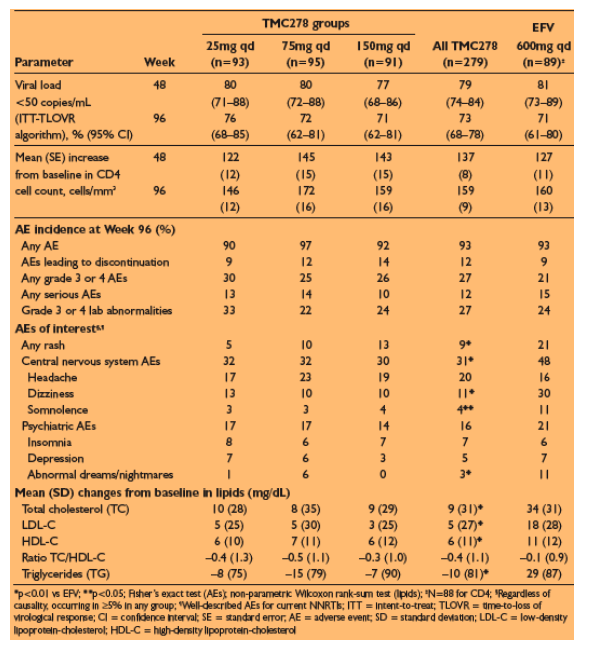
At Week 96 vs Week 48, there were few TMC278 dose-related effects, and no change in types nor notable increase in incidence of AEs. All rashes were grade 1 or 2 except one case of grade 3 rash (TMC278 75mg arm, dapsone-related). Rashes resolved with continued dosing (median duration: all TMC278 17 vs EFV 15 days). Incidences of grade 3 or 4 nervous system AEs (no discontinuations; all TMC278: 0.7% vs EFV: 1.1%) and psychiatric AEs (1.8% vs 1.1%) were low. Psychiatric AEs led to discontinuation in 0.4% vs 2.2% of patients.
Over 96 weeks, TMC278 demonstrated a high, sustained virological response rate and was generally well tolerated with lower incidences of rash, nervous system and psychiatric AEs, and less lipid increases than EFV.
Please note the analysis of nervous system events in the abstract has been revised in the poster to also include peripheral nervous system events.
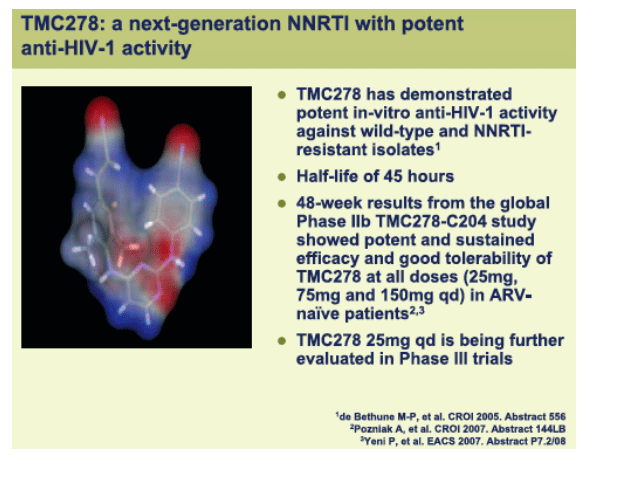
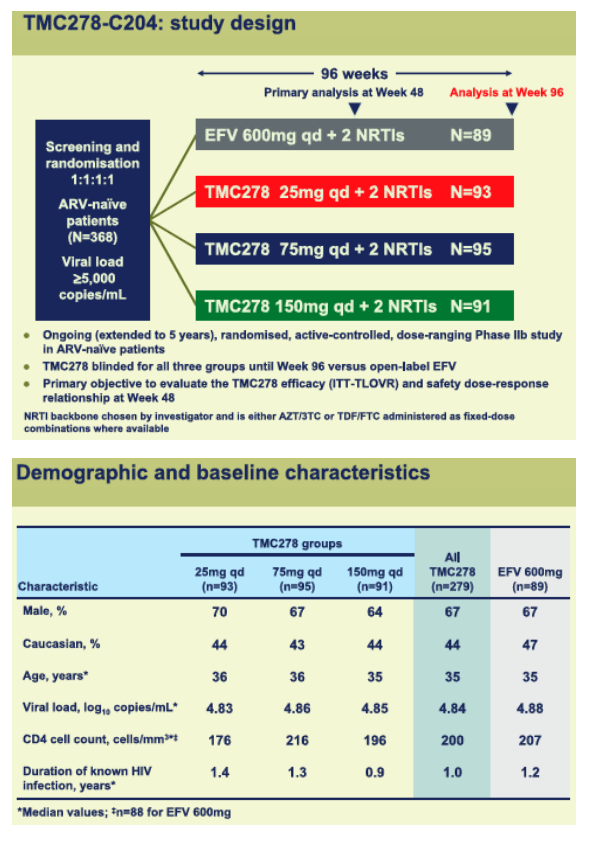
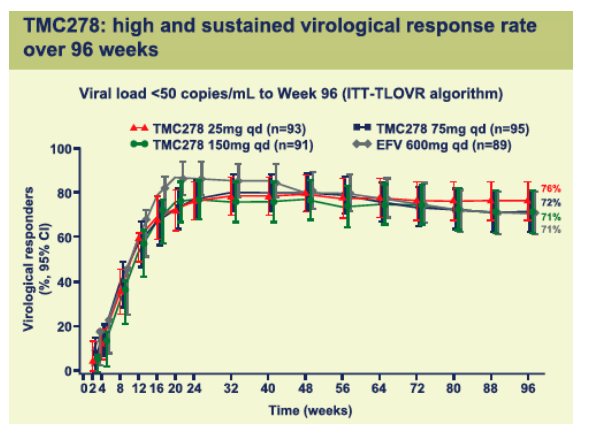

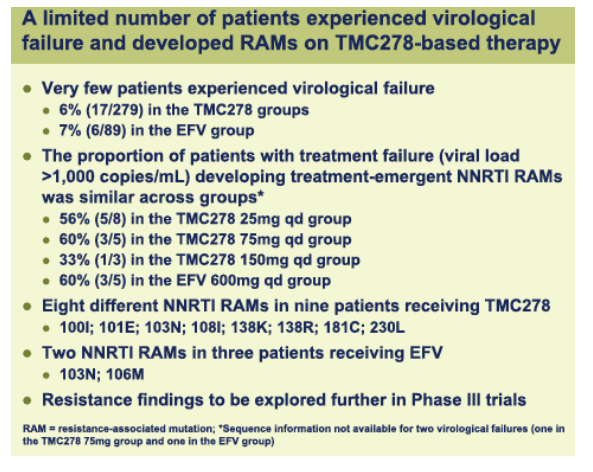
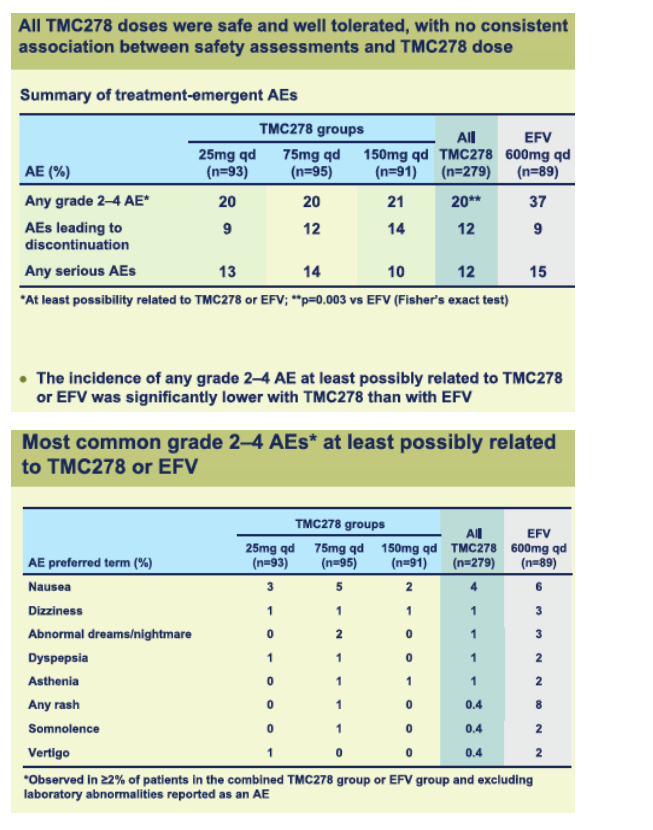

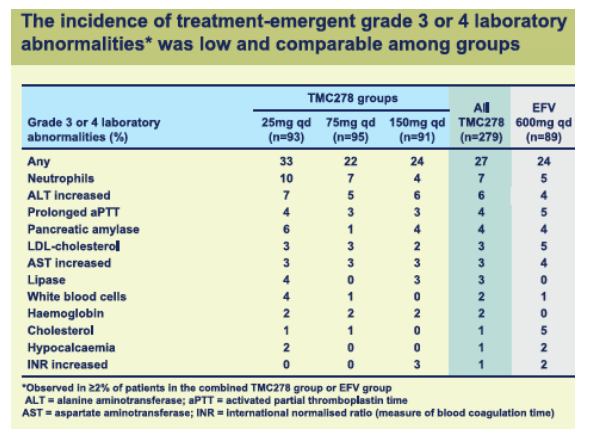

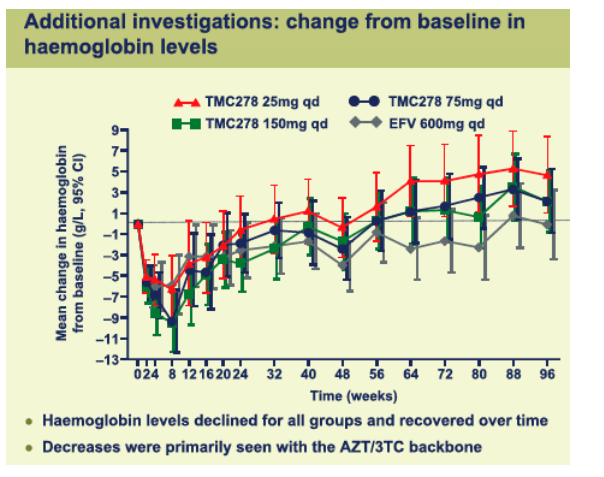
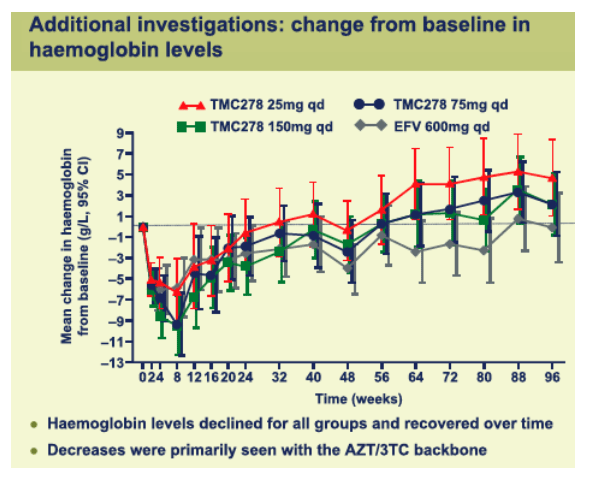
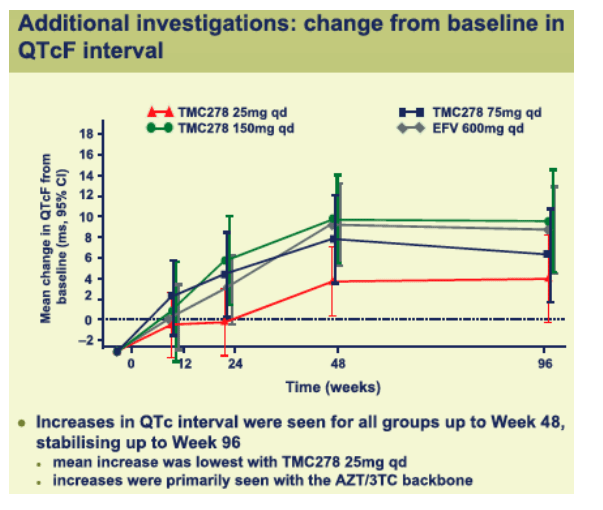
|
| |
|
 |
 |
|
|